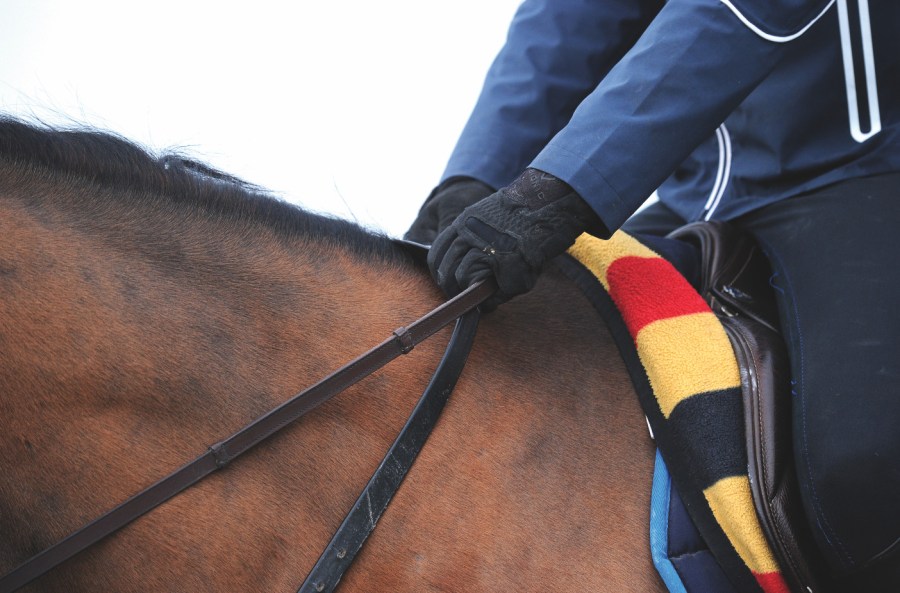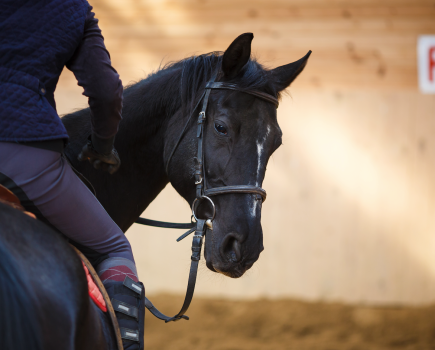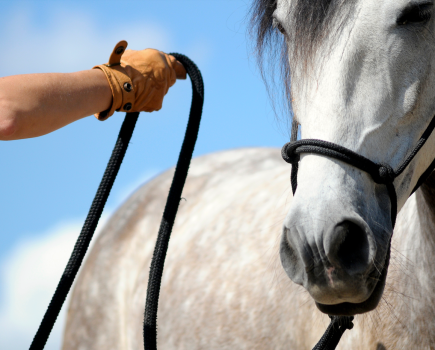Maintaining a consistent contact can be tricky, so what should you be aware of? Coach Karin Major highlights some of the most common errors riders make.
The main errors seen in riders trying to maintain a contact are holding the hands too low and pulling the horse’s head in. The rider’s hands should be above the level of the horse’s mouth, so that the bit stays up into the fleshy corners of the mouth, rather than being pulled down onto the bars. This means that if the horse’s head comes up as they hollow, then the hands should come up too.
Straight, stable, give
You’re aiming for a straight line from your horse’s mouth through the reins and hands to the elbow – when viewed both from the side and from above – although you may need to widen your hands to keep the contact consistent.
It’s your horse’s job to take the contact from you; not you from them. This means that you must have a stable position in the saddle and be able to ‘give’ with your hands. In walk, your hands should follow the head nod of your horse.
Perpetuating the problem
The main error is that the rider is usually too focused on the horse’s head and neck position, rather than the shape of their back. Their head will lower and reach into a contact as their back comes up. So ensure your bodyweight is supported from your thighs, rather than being ‘bum heavy’, so that your seat is light enough for your horse to lift. Taking a contact requires them to have trust in your hand too; they need to be sure that they won’t get yanked in the mouth, which takes time, patience and a secure seat from you.
There can be a moment in the transition from your horse being hollow and head high to flat/ round with their head and neck reaching lower where you need to give with the reins. Your horse must also build strength through their back muscles to maintain this position.
Groundwork for strength
Your horse can be helped to understand the bodily organisation required for working in a contact through appropriate groundwork. Take time on the ground before mounting to encourage your horse to relax and walk with their head down before you get on. Make sure you also have their back, teeth and saddle checked to ensure that they’re not in any discomfort.
Meet the expert: Karin Major was a Ride With Your Mind coach at Overdale Equestrian Centre, the UK base of coach Mary Wanless. Karin has worked with Mary for 20 years and offers lessons and clinics. She now runs Move to Improve Equestrian, the first company in the UK to offer rider biomechanics and the Feldenkrais Method in combination.
Check out our subscription offer









